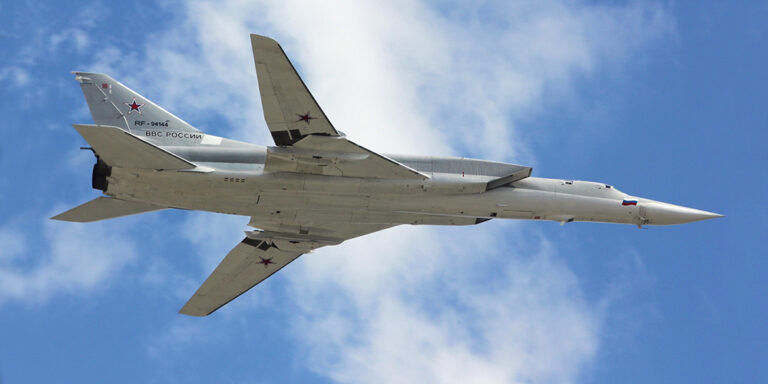17 August 2016, Moscow, Russia — Yesterday Russian Air Forces long-range bombers Tupolev Tu-22M3 (NATO designation: ‘Backfire’) delivered their first airstrikes against Islamist targets in Syria operating from an Iranian airbase. The prime benefit for the Russian Air Forces is that flying from Persian soil induces a drastic reduction in flying time to terrorist targets in Syria. Before that, Russian long-range bombers had to conduct airstrikes against Syria from a base in Mozdok, Russia. This meant they had to cover a distance of about 2,000 km to get into Syrian airspace. Now that distance has been reduced to some 700 km, providing more punch against time-sensitive Islamist targets.
The mighty bombers, each with a full bomb payload, took off from Hamadan air base in Iran to attack Islamic terrorists hideouts (mainly Daesh, formerly ISIS/ISIL, and Al-Nusra Front facilities) in Aleppo, Deir-ez-Zor and Idlib provinces. According to Russian public news, the strikes have eliminated five major terrorist weapons depots and training compounds in the area as well as three command posts and a significant number of terrorists, an information sources from the Russian Defense Ministry. The long-range bombers were escorted en route by a number of Su-30SM and Su-35S (‘Flanker-E’) jet fighters which had taken off earlier from Khmeimim air base in the western part of Syria.
Russia notified the US-led coalition about its operation involving the use of an Iranian airfield and passing through the coalition-controlled territory in time, which was “enough” to maintain safety in the airspace over Iraq and Syria, the US Defense Ministry spokesman said during a briefing shortly following the Russian air strikes.
Let’s remind here, that Iran has agreed to share its military facilities and capacities with Russia, confirming dedication to strategic cooperation in fighting against terrorism in Syria, Iran’s Secretary of Supreme National Security Council Ali Shamkhani told Islamic Republic News Agency (IRNA) in an exclusive interview on 16 August. As for Khmeimim airfield in Syria’s Lataqia province, used by Russian task force since September 2015 to bring about attacks against Daesh,¬ its airstrip is not suitable for the heavy Tu-22M3. But that is about to change in the coming months, as Damascus granted Moscow permission to station a permanent military airbase at Khmeimim, and the Russian Air Forces are said to be preparing a thorough modernization of that air strip, in order to accommodate all types of military aircraft in the near future.
In January this year, Moscow and Tehran signed military cooperation deal that implies wider collaboration in personnel training and counter-terrorism activities. Russia’s Defense Minister Sergey Shoigu and his Iranian counterpart Brigadier General Hossein Dehghan signed the document during a visit by Russia’s top brass to the Iranian capital.
On Monday, Russian media reported that Moscow has once again requested Iran and Iraq to allow cruise missiles to fly through their respective airspace to deliver strikes on terrorist targets in Syria. Moscow and Tehran cooperation in Syria is of a straight strategic nature confirmed the head of Iran’s National Security Council.


